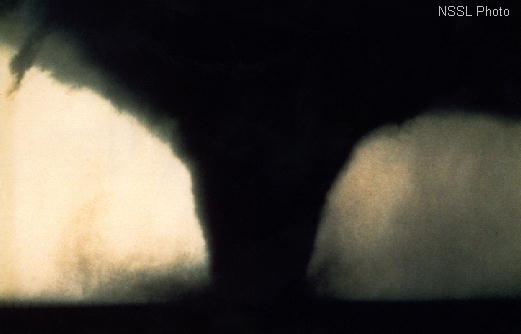In a pop-culture world that can turn anyone from a pawn shop owner to a professional beach vacationer to a rich (and petty) housewife into a television star, it's not surprising that tornado-seeking meteorologists would want to get in on the action.
While the "storm chasers" highlighted in reality television programs bring some scientific knowledge to the field of meteorology, the amount of actual data collected is not worth the considerable risk associated with chasing storms. Well, at least it's not worth the risk to innocent citizens who share the roads with these "scientists."
Recent episodes of The Discovery Channel's s Storm Chasers highlighted the dangers that storm chasers pose.
One of the featured storm-chasing teams was shown passing illegally on a crowded two-lane road because they needed to get to the location where they planned to "intercept" a potential tornado-producing storm.
By the way, many of the vehicles stuck in the traffic jam were other professional or amateur storm chasers. Storm chasing has become so popular that traffic jams occur whenever it's the peak of the season and the number of potential tornado-producing thunderstorms is relatively small. All of the storm chasers end up in the same general area, slowing or stopping traffic where a potentially deadly storm is often imminent.
In a different episode, this same team crashed its tank-like vehicle into a ditch after racing at unsafe speeds on a wet, muddy, and slippery two-lane roadway, ignoring the safety of anyone else. For the record, most other vehicles would not fare well in a collision with an armored storm-chasing vehicle.

A second storm-chasing team was shown weaving in and out of traffic in its tank-like vehicle on a rain-soaked interstate in an attempt to get ahead of a developing storm. This team has, on numerous occasions, complained about the lack of safety of the vehicle, indicating that it has braking problems. The driver of the vehicle said that it was becoming a death-trap.
This is not about science. It's about people who love the weather, want to be television stars, and will do whatever it takes to reach their goal. They seem to be especially happy when they get to the tornado before one of the other teams.
That sounds like ego. It sounds like competition. It sounds like celebrity.
There is some scientific data to be gained from field observation, such as details about atmospheric pressure and wind speed within a tornado and collecting precise radar data from the scene. The filming of tornadoes, which is what some crews do exclusively, can serve some purpose related to entertainment, education, and perhaps even the collection of scientific knowledge.
This information should help meteorologists refine their understanding tornadoes, but tornado forecasting will continue to improve regardless of any field data. Doppler radar and computer forecast models have been the key elements to improved forecasting to date. This is not dependent on data collected from chasers.
Storm chasers also provide some value by calling in reports of tornadoes to local National Weather Service offices and municipalities. However, most tornado warnings are based on National Weather Service radar information, not live reports. In other words, the amount of warning for those in the path of a tornado is typically not enhanced by storm chasers.
Storm chasing has some intrinsic value, but it's a pretty thin veil of science to stand behind when the process places innocent drivers and pedestrians at considerable risk.